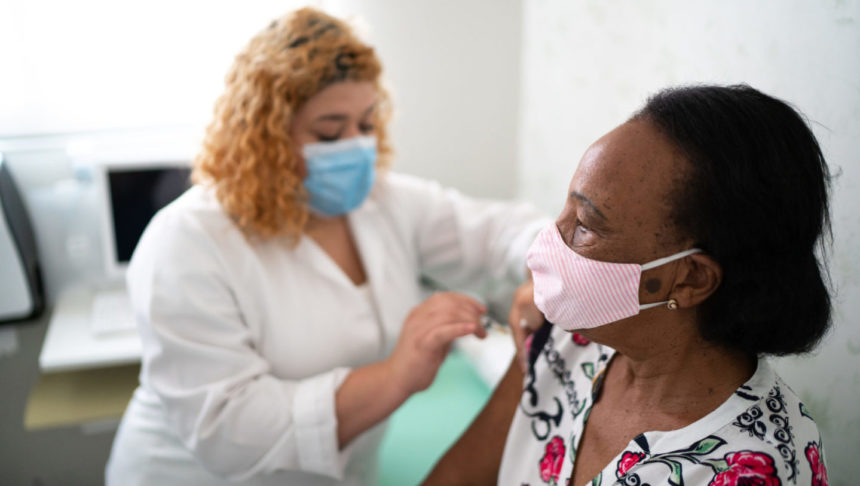
The leader of the nation’s largest nursing home association is hopeful COVID-19 vaccinations of all U.S. nursing home residents will be complete by the March 1 target date it set for states last month.
American Health Care Association President and CEO Mark Parkinson expressed optimism about the vaccination efforts in long-term care during a panel discussion hosted by the Kaiser Family Foundation Thursday, saying the overall process has “been going pretty well” for the skilled nursing sector.
Situation looking up
Parkinson noted the population in long-term care facilities accounts for just about 2 million to 3 million of the country’s overall population of about 328.2 million people. However, KFF data presented during the event showed that coronavirus-related deaths in long-term care account for nearly 40% of overall COVID deaths in the U.S.
“If we can just get our act together and figure out how to get all of these people vaccinated, in a very short period of time we can cut the COVID death rate dramatically,” Parkinson said.
A Centers for Disease Control and Prevention advisory board recommended long-term care be given top priority for the COVID-19 vaccine, and Parkinson noted “virtually every governor and unit of government” has followed suit with those recommendations.”
Parkinson said when solely looking at the vaccine rollout in long-term care, the process “has actually been going pretty well.”
“We issued a challenge to every governor to have a second dose of vaccine in all long-term care residents by the first of March, and I think we have a really good chance to beat that goal,” Parkinson explained.
“Virtually every single facility across the country, particularly on the skilled nursing side, has either had their first clinic or their first clinic will be held [by the end of January] … and its second round of vaccine before the March 1 deadline that we have really set for the governors to establish,” he added.
Skepticism among workers
Parkinson noted that while vaccine uptake among residents seems to be around 90%, nursing home workers have been a bit more hesitant to receive the doses. Overall, he said the acceptance rate among workers is believed to be between 45% and 50%.
He also attributed that to misinformation, lingering distrust about vaccines and fear of potential side effects.
“I think we scared the heck out of a lot of people by talking about how bad some of these side effects might be. In reality, that hasn’t occurred at all,” he said.
During the second and third rounds of vaccine clinics, staff uptake has been greater, Parkinson added.
“The staff have seen that there weren’t these terrible side effects that had been talked about. We think we may be able to get up into the 65% to 70% range when we get into the second clinic,” he said.
Stay on track
Parkinson also addressed criticism about the overall vaccine program, the amount of doses that have been distributed versus what’s actually been administered. He pleaded with policymakers that it “would be a massive error if the second round of vaccine was taken away from long-term care facilities to use in the general population.”
“I think that there are tens of millions of people in the general population that need the vaccine immediately,” Parkinson said. “We need to get to them as quickly as we can, but it would be a mistake to do that at the expense of a program that again can lower the overall death rate by 40% in just a matter of a few more additional weeks.”
“It may not be perfect. It may not be going absolutely as we had hoped, but it’s going pretty darn well and we can finish it off. We can save a lot of lives,” he added.





